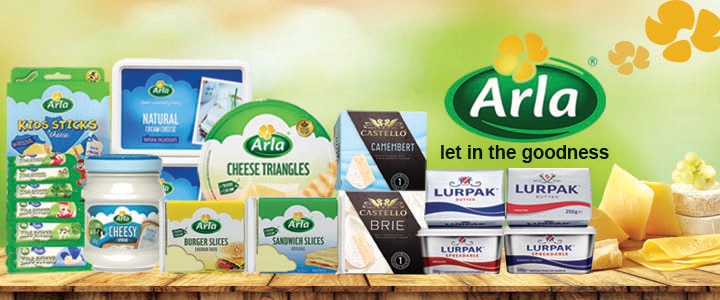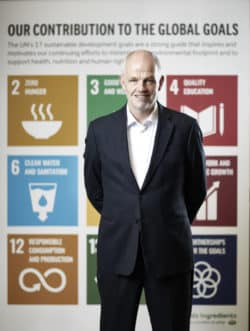
Biogas delivers 30% reduction in CO2 emissions at global dairy company Arla
Dairy company Arla Foods Ingredients has since 1881 built a global business out of what was previously considered a waste product, whey. Now they have closed the circle further with biogas, reporting CO2 savings of around 60,000 tonnes a year by using energy from biogas.
This is what sustainable agri-food businesses will look like in the future and the shift is happening. General Mills in the US, Brewdog Brewery, Scotland, and Wyke Farms, England, have all adopted biogas in their drives towards net zero production.
Among a raft of initiatives, Arla is also pioneering new products to help customers cut their energy use and associated emissions by as much as 25%. The two initiatives are part of the company’s Green Ambition 2050, the sustainability strategy of parent company, Arla Foods amba, which aims to become carbon net-zero by 2050.
Switch to biogas cuts emissions

Arla Foods Ingredients and Arla Foods amba have received methane from a biogas plant since 2019. The biomass it processes primarily comprises manure from Arla farms, as well as production waste.
At each of Arla Foods Ingredients’ two largest production plants, there are two 4,000 horsepower biogas engines. They convert the methane into over 50 GWh of electricity each year – equivalent to the amount used by 11,600 households.
In 2019, CO2 emissions from the two plants totalled 105,000 tonnes. Without the use of biogas, they would have emitted 167,000 – a reduction of 62,000 tonnes. A similar saving is forecast for 2020, despite increased production.
Now greener sources such as biogas supply over 30% of the energy needs of the company’s production facilities in Denmark.
Henrik Andersen, CEO at Arla Foods Ingredients, said, “Sustainability is part of our DNA. Arla Foods Ingredients has always been an example of a circular economy because we convert whey, which used to be considered waste, into high-value food and nutrition products.
“Now we’re taking new steps to reduce our carbon footprint and help protect the environment for future generations. Reducing our use of fossil fuels and investing in greener energy sources such as biogas is an essential element of this ambition.”
Greening the value chain
Under the Green Ambition 2050, Arla Foods Ingredients is committed to help customers meet their own sustainability goals. For example, it has developed a dry blend lactose that helps infant formula manufacturers reduce their energy usage.
Lactose is usually supplied in a wet blend which must be heat-treated and spray-dried before packaging – a highly energy-intensive process. To support more sustainable production, Arla Foods Ingredients offers a dry blend version which can be added after the other ingredients have been mixed.
Because manufacturers do not need to dissolve the blend and spray-dry it again, they can reduce their CO2 emissions by as much as 25% – or up to 150kg of CO2 per ton of finished product. Arla Foods Ingredients estimates total CO2 savings from customers using its dry blend lactose to be as high as 24,400 tonnes.

